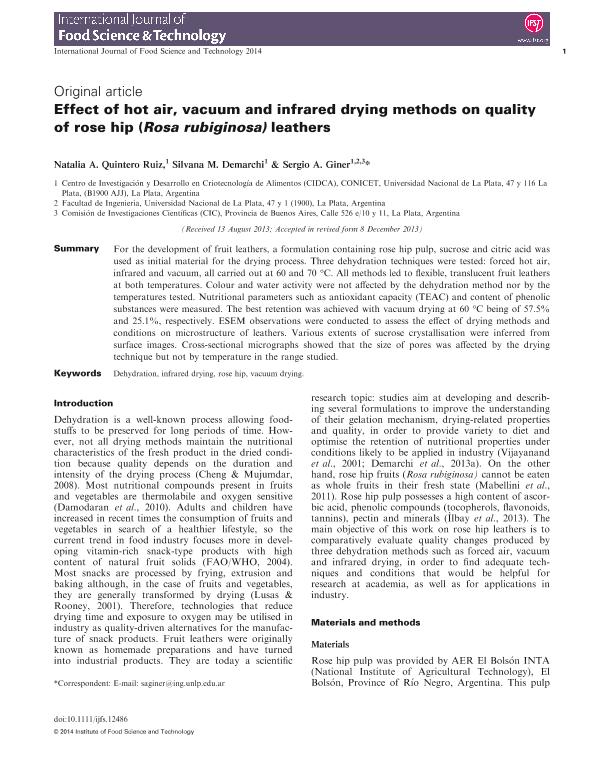Artículo
Effect of hot air, vacuum and infrared drying methods on quality of rose hip (Rosa rubiginosa) leathers
Fecha de publicación:
08/2014
Editorial:
Wiley Blackwell Publishing, Inc
Revista:
International Journal of Food Science and Technology
ISSN:
0950-5423
Idioma:
Inglés
Tipo de recurso:
Artículo publicado
Clasificación temática:
Resumen
For the development of fruit leathers, a formulation containing rose hip pulp, sucrose and citric acid was used as initial material for the drying process. Three dehydration techniques were tested: forced hot air, infrared and vacuum, all carried out at 60 and 70 °C. All methods led to flexible, translucent fruit leathers at both temperatures. Colour and water activity were not affected by the dehydration method nor by the temperatures tested. Nutritional parameters such as antioxidant capacity (TEAC) and content of phenolic substances were measured. The best retention was achieved with vacuum drying at 60 °C being of 57.5% and 25.1%, respectively. ESEM observations were conducted to assess the effect of drying methods and conditions on microstructure of leathers. Various extents of sucrose crystallisation were inferred from surface images. Cross-sectional micrographs showed that the size of pores was affected by the drying technique but not by temperature in the range studied.
Palabras clave:
Dehydration
,
Infrared drying
,
rose hip
,
vacuum drying
Archivos asociados
Licencia
Identificadores
Colecciones
Articulos(CIDCA)
Articulos de CENTRO DE INV EN CRIOTECNOLOGIA DE ALIMENTOS (I)
Articulos de CENTRO DE INV EN CRIOTECNOLOGIA DE ALIMENTOS (I)
Citación
Quintero Ruiz, Natalia Andrea; Demarchi, Silvana María; Giner, Sergio Adrian; Effect of hot air, vacuum and infrared drying methods on quality of rose hip (Rosa rubiginosa) leathers; Wiley Blackwell Publishing, Inc; International Journal of Food Science and Technology; 49; 8; 8-2014; 1799-1804
Compartir
Altmétricas




